
Michel Hayard, "Antide Janvier 1751 - 1835, Horloger des étoiles, Celestial clockmaker." France 1995, illustrating this clock, Page 97 - 100.

Michel Hayard, "Antide Janvier 1751 - 1835, Horloger des étoiles, Celestial clockmaker." France 1995, illustrating this clock, page 97

Michel Hayard, "Antide Janvier 1751 - 1835, Horloger des étoiles, Celestial clockmaker." France 1995, illustrating this clock, page 98

Michel Hayard, "Antide Janvier 1751 - 1835, Horloger des étoiles, Celestial clockmaker." France 1995, illustrating this clock, page 99

Michel Hayard, "Antide Janvier 1751 - 1835, Horloger des étoiles, Celestial clockmaker." France 1995, illustrating this clock, page 100.
Antide Janvier France, 1751-1835
Further images
-
(View a larger image of thumbnail 1
)
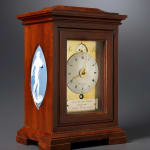
-
(View a larger image of thumbnail 2
)
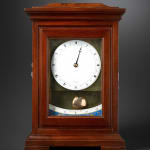
-
(View a larger image of thumbnail 3
)
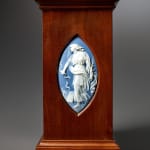
-
(View a larger image of thumbnail 4
)

-
(View a larger image of thumbnail 5
)
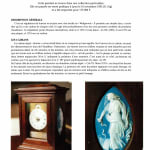
-
(View a larger image of thumbnail 6
)
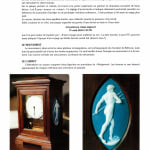
-
(View a larger image of thumbnail 7
)
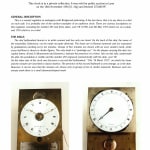
-
(View a larger image of thumbnail 8
)
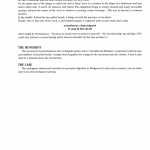
Provenance
Thomas Morel, who commissioned the work.
Literature
Michel Hayard, "Antide Janvier 1751 - 1835, Horloger des étoiles, Celestial clockmaker." France 1995, illustrating this clock,
Page 97 - 100.
Tardy, "La Pendule Francaise", Paris 1949 vol. 11, Page 414, illustrating another Janvier subscription clock.
A rare small subscription table regulator of eight day duration by Antide Janvier. Signed twice, once on one of the two dials and again beneath an engraved silvered plaque. In a solid mahogany case with oval blue and white Sèvres biscuit plaques to either side. With white enamel dials on either side of the clock, the first: signed on the back Dubuisson and on the front inscribed: Thomas Morel Cmde 1781. With Arabic numerals indicating the minutes and Roman numerals for the hours. Fine gilt pierced hands with a small dial in the centre for alarm adjustment, the alarm sounding on a bell. Above the dial, a small cut out for time regulation.
To the left is engraved A (advance) and to the right R (retard). A single winding square below the dial for going only and alarm. Below this, an engraved silvered plaque reading: Ad Potiorem Vitam Migravit. IV Maii M.DCC.XCV11.
The second white enamel dial signed Janvier, with a single blued steel hand and numerals depicting minutes | and hours marked 1-12. The pendulum visible beneath the dial, to either side is engraved: No 297 and AN VII. Below a blue and white with gold enamel decorative plaque with indications for the beat. Above the dial are the engraved initials: M and T.
Having a rare verge escapement with jewelled pallets and anchor wheel.
Paris, dated 1781
Height 26 cm, width 18 cm, depth 13 cm.
Antide Janvier (1751-1835), like Bourdier and other eminent eighteenth century artists was committed to the science of clockmaking. Janvier made precision clocks of almost unprecedented accuracy, and like Abraham-Louis Breguet (1747-1823) created some of the world's most complex and sophisticated clocks, of which this small table regulator is a fine example. The various dials are indicative of its internal ingenuity Even more remarkable is the fact that the complex movement is neatly arranged within a case of only 22 cm. high, since most table regulators, (of which only few were made) tended to be larger.
As Louis XVl's official clock-maker, Janvier was given lodgings and a workshop in the Louvre from where he supplied clocks for the royal palaces. During the Revolution Janvier and another royal clockmaker, Robert Robin (1742-1809) were imprisoned; though later Janvier was employed by the new government, advising on a new decimal system of time measurement. Though this ingenious regulator was made before the Revolution it also bears the date of 1797. This relates to the death of Thomas Morel who commissioned the work. Below the first dial is an added silvered plaque (covering Janvier's original signature), its latin inscription translates 'He passed onto a better life. 4th May 1797'. On the other side of the clock are the initials 'M T - most probably those of Morel. The initials AN VII' refer to a specific dating system introduced by the new government, indicating the 7th year of the Revolution, ie: between September 1797 and '98; again added dates (probably by Janvier) relating to Morel's death.
The word 'Cmde', which appears on the first dial means that the work was oipered by subscrt tion, ie: paid or partly paid for in advance and then built to the client's specific requirements. Breguet also used such a system in marketinnta special type of watch; but while his were made in great numbers, Janvier's clock is almost undoubtedly unique. It is very unusual to find a clock with dials on both sides, this was probably because Morel wanted a clock that could be read from either side of a room.
Both dials and the decorative enamel plaque on the second side of the clock were the work of the outstanding enameller, Gobin Etienne, known as Dubuisson. He and Joseph Coteau were the greatest artists associate' with this technique, creating unprecedentedly rich colours and delicate designs.
Both only ever supplied leading clockmakers. In 1756 Dubuisson was employed by Sevres as an enameller for watch cases, clock dials and plaques. Interestingly, on either side of the solid mahogany clock case are two oval Sevres plaques made of biscuit (unglazed porcelain); they depict finely modelled classical figures. It is rare and exciting to find a combination of perfect craftsmanship, sue an interesting provenance and a work in fine original condition, which all constitute this an extremely rare and important work of art.
This ingenious regulator was made before the Revolution it also bears the date of 1797. This relates to the death of Thomas Morel who commissioned the work. Below the first dial is an added silvered plaque (covering Janvier's original signature), its latin inscription translates 'He passed onto a better life. 4th May 1797'. On the other side of the clock are the initials 'M T - most probably those of Morel. The initials AN VII' refer to a specific dating system introduced by the new government, indicating the 7th year of the Revolution, ie: between September 1797 and '98; again added dates (probably by Janvier) relating to Morel's death.


